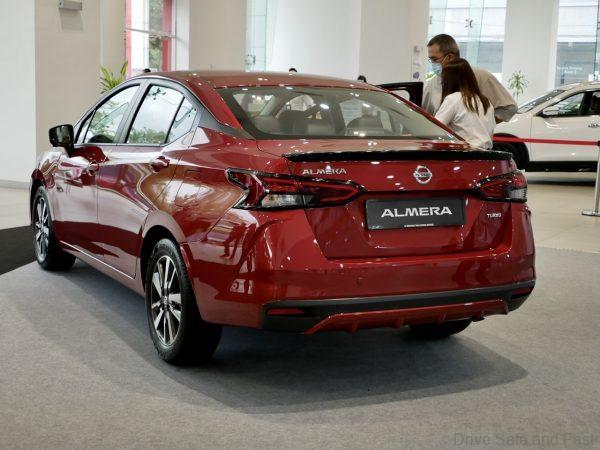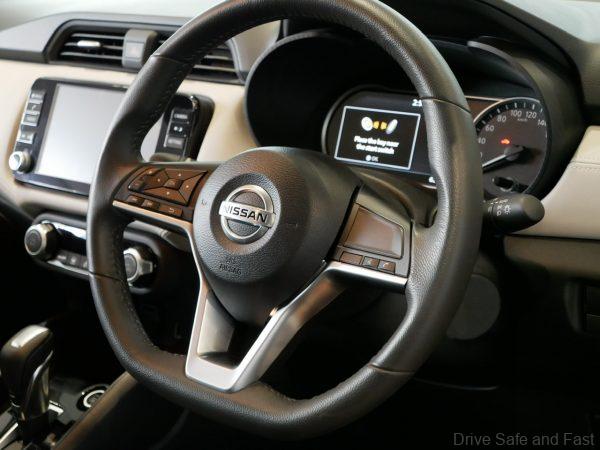City vs Almera vs Vios: Top Petrol Spec Comparison
A quick guide to help you choose your next budget-friendly Japanese sedan in Malaysia.
2020 was certainly a tough year for the Malaysian automotive industry. Besides having to navigate a new, vague National Automotive Policy, car companies also had to deal with a sudden change in government, increased competition from Proton and of course the impact of the pandemic on supply lines, the economy and working practices.
But it wasn’t all doom and gloom. The industry also benefitted from an SST break, which is still in effect for another week. The three largest Japanese car brands also managed to launch quite a few models between them. Particularly interesting was the B-segment sedan space, which saw all-new models from Honda and Nissan as well as a refreshed model from Toyota.

So while there’s still a week left of SST-free sales on all 3 of these B-segment Japanese sedans, we thought we’d do a quick comparison between the three most expensive models offered by each.
Honda City 1.5 V
Least Expensive
At RM85,561, the City 1.5 V has the benefit of being the least expensive ‘top tier’ variant of the three cars. However, this is only because the 1.5 e:HEV RS model has yet to be given a price from the government. We can’t consider this a flagship City, it’s still the top tier petrol model from Honda in this segment.

Highest Horsepower
The petrol powered new City models come with DOHC i-VTEC engines which are not the same as what we found in the previous generation. Despite not being turbocharged, the City 1.5 V has the most horsepower in this segment with 119hp at a comparably high 6,600rpm.

Biggest Dimensions
Honda also have its competition beat when it comes to length, width and bootspace – key metrics when it comes to usable space in a car. It’s not even a marginal difference either. The City is 12.8cm longer than the Vios and nearly 2cm wider with a boot that’s 37 litres larger than the Almera’s.

Other Nice-To-Haves
At this price, every little feature can give a model a leg up on the competition. For the City 1.5 V, it’s the remote start key fob feature, and the Honda LaneWatch camera. Honda also gives you 8 speakers at this price point, where other competitors max out with just 6. Additionally, the City is the only car in this comparison with rear air cond vents. Finally, the City gets seat belt reminders on all 5 seats where its competition only warns for the front seats.
What It’s Lacking
While the yet-to-be-launched City e:HEV RS does come with most of the Honda Sensing safety package, the City 1.5 V is completely lacking in this department. This makes it the only entry on this list without Advanced Driver Assistance Systems. It’s also the only model here with a plain Jane rim finish, where the other brands offer two-tone finished rims. These are reserved for the e:HEV RS model.

Nissan Almera VLT
Turbocharged and Torquey
The trend of downsized, turbocharged engines has finally reached the Japanese B-segment in Malaysia and Nissan are the first to offer it with the new Almera. This 1-litre 3-cylinder engine is fuel-efficient and has the most torque of all its competitors at 152Nm. Peak torque is available at a very low RPM too, so the ‘push’ feels instantaneous. The small displacement also means the Almera has an annual road tax of just RM20, more than 4 times cheaper than the City and Vios.

Passenger Comfort and Space
The new Almera has the longest wheelbase and the lowest weight in its class. The zero gravity inspired seats are said to be the the comfiest in class and some of the engineering improvements to the suspension are designed to give the Almera a slight edge in passenger comfort while improving dynamics over its predecessor.

Ease of Driving
Nissan have done a couple of things to make the Almera a little easier to drive than its competitors. This includes a 360-degree camera with moving object detection. The Almera also gets a flat-bottomed steering wheel, which gives the driver a little more thigh room. We mentioned this earlier, but the turbocharged engine does also make the car a little easier to get up to speed with little pedal modulation.

Other Nice-To-Haves
Nissan knew they had a tough fight on their hands, so they did a few things differently with the new Almera. First of all, they included Advanced Driver Assistance Systems on all 3 variants of the car – a first in this segment as most brands will reserve these safety features for higher trim levels. They also made sure the Malaysian spec car had more equipment than other Almeras sold in this region. The Almera is also aesthetically more diverse and interesting than the Honda and Toyota. It comes in an eye-catching Monarch Orange colour option, has white accents on both the dashboard and seats, and has semi-bucket seats as standard. There’s also an LED rear foglight and this trim level comes with a little spoiler at the rear.

What it’s Lacking
In terms of equipment, there’s really very little to complain about on the new Almera. The only glaring omission this time around is paddle shifters, which are available on both the Toyota and Honda alternatives. Additionally, the Almera is the priciest of the 3 cars while also having the smallest boot – almost the reverse of what happened with the previous Almera.

Toyota Vios 1.5 G
Safest Of The Lot
It may have taken a few years, but Toyota can proudly say that they offer the most safety equipment in the segment. The Vios has an additional airbag for the driver’s knees that’s unavailable on the other cars. The Advanced Driver Assistance System on the Vios is the only one here that uses both a camera AND a radar sensor. This gives it the Lane Departure Alert ability at 50km/h and above – something the Almera can’t do with its radar-only system.

Practical Equipment
It may surprise you, but the Toyota Vios is the only car in this segment with disc brakes at the rear. Tiptronic gear selection may be a little redundant when you have paddle shifters, but with the Vios you get both. The Vios is also the only car here with front parking sensors – handy considering how difficult cars are to see out of these days. Finally, only Toyota give you a full-sized spare wheel in the boot – an added cost for the company that benefits the customer.

The Option To Upgrade
While this does mess with the pricing, we have to commend Toyota for offering customers the option to add not just an aero kit, but to get the Vios GR-S option as well. This actually does add some tangible performance benefits along with a more aggressive look.

Other Nice-To-Haves
There’s now a Vehicle Telematics System onboard which offers a little better safety, security and connectivity options for your Vios. Additionally, the acoustic glass windscreen does really help dampen wind noise on the Vios to a noticeable degree.

What it’s Lacking
The Vios still doesn’t have telescoping steering, which makes ergonomics a little worse than other cars for larger drivers. It also sports the smallest display here at 7”. Finally, being a facelift model, it also lacks the generational leap found on the City and Almera models. This is particularly true with the engine and gearbox, which was last revamped in late 2016.